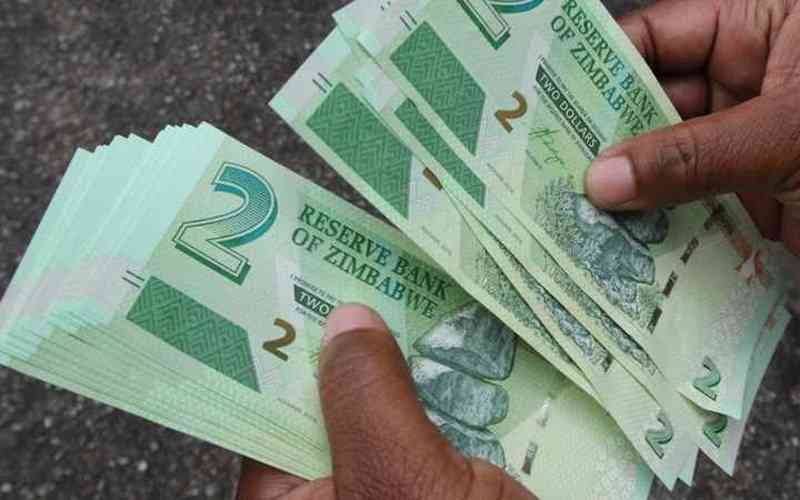
I HEAR many Zimbabweans suggesting that Zimbabwe was driven to bankruptcy and the crash of the dollar by paying war veterans in 1997.
However, this perception is wrong because Zimbabwe printed and paid $50 000 in local currency, to around 30 000 to 60 000 war veterans, which constituted a worst-case scenario payment of only 3% of gross domestic product (GDP).
In comparison, the United States passed the #GIBill in 1944, which paid for the education fees, housing, healthcare and allowances for over 16 million World War II veterans, to help them reintegrate into the country after the war.
This was the equivalent of 15% of US GDP, but it did not lead to the crash of the US currency.
At the time of the GI Bill’s passing, approximately 70% of universities and vocational training college attendees, were US veterans whose fees were being paid by the US government.
Hence, why should Zimbabwe’s payment of 3% of its GDP in compensating war veterans lead to the collapse of the currency when the US compensation of 15% of its GDP to its veterans did not result in a currency crash?
Moreover, what many may not know is that by the time government paid the war vets, it had already been paying over US$25 million a year in pensions — in foreign currency — to former Rhodesian soldiers and another $25 million a year to 2 000 Rhodesian civil servants, since 1980.
This adds up to more than US$1,1 billion by 2003 (US$2,1 billion today) when the government stopped making those payments.
- Chamisa under fire over US$120K donation
- Mavhunga puts DeMbare into Chibuku quarterfinals
- Pension funds bet on Cabora Bassa oilfields
- Councils defy govt fire tender directive
Keep Reading
Even today, the British government is still seeking about US$25 million per year for its 2 000 pensioners from the Zimbabwean government.
Despite Zimbabwe having paid a hefty US$850 million in foreign currency pension payments to Rhodesians by #BlackFriday, Zimbabweans still continue to blame the fall of the dollar on the compensation of war veterans with the Zimdollar equivalent of US$240 million.
This argument is flawed because the reasons behind the fall of the Zimdollar on Black Friday, 1997, were due to various factors.
These include the pullout of $3,8 billion in foreign investments from the western-dominated Zimbabwean financial markets, after war veterans received their gratuities and were further promised 20% of all appropriated land in land reform.
White capital pulled out on Black Friday to punish the Zimbabwean government for compensating war veterans and planning to take white land to give to the war veterans as well.
The white community understood the power the war veterans and their leader Chenjerai Hunzvi wielded to push government to do what they want.
So they were pushing back to demonstrate their capacity to crash the economy if they did not get their way.
But they made a blunder because then President, the late Robert Mugabe called their bluff and they ultimately lost everything to indigenisation.
We should learn from #BlackFriday, that despite Zimbabwe being open for business, let us not allow our economy to be monopolised by foreigners who can sabotage it, as they did on Black Friday.
Instead, let us advocate for a predominantly locally-owned economy.
So, Zimbabweans who believe that the economy collapsed in 1997 due to war veterans (who secured the country’s independence) being paid in local currency forget that what war veterans were paid was the equivalent of just 30% of the US$850 million pension payments, made to Rhodesian soldiers and civil servants in 17 years of independence.
They also overlook that Zimbabwe inherited and repaid $700 million (US$2,8 billion today) Rhodesian debt after independence; it spent US$3,8 billion (US$11,2 billion today) fighting the apartheid government; it had to borrow US$3,5 billion (US$11 billion) to develop electricity, roads, schools and hospitals that the coloniser never constructed; it lost over $3 billion in industry to the Economic Structural Adjustment Programme and it borrowed US$400 million in high interest loans from the International Monetary Fund and World Bank for 1992 drought relief.
These factors are among many which broke Zimbabwe’s currency. - Rutendo Matinyarare
Zim needs to manage her debts
DEBT plays an important role in the resource mobilisation strategy of any country.
However, the processes of its contraction, sources, structure and its implications on the economy and the lives of people need to be carefully considered.
If managed unsustainably, debt can be intractable and can deprive citizens of socio-economic development, with women bearing the brunt of it.
Inequality continues to manifest in different facets of life, with the poor and vulnerable perpetually short-changed.
As with the rest of Africa, Zimbabwe is saddled with a huge debt overhang.
Already, efforts are currently being made by the Zimbabwean government to address the debt question.
These include the promulgation of the Public Debt Management Act and the Arrears Clearance Strategy to name a few.
Institutions such as the Debt Management Office, the Public Accounts Committee, Parliamentary Portfolio Committee on Budget and Finance are already established and making efforts to improve debt management.
Despite all this, debt levels have been soaring. As at end of September, Zimbabwe’s total public debt (external and domestic) including Reserve Bank of Zimbabwe (RBZ) debt, was estimated at $10,97 trillion.
Of the total, external public and publicly guaranteed debt accounts for 79,6% ($8,7 trillion), including blocked funds 13,2% ($1,5 trillion) and domestic debt representing the balance at 20% ($2,2 trillion).
The amount for the compensation of former farm owners, amounting to $2,18 trillion (US$3,5 billion), represents a significant share of domestic debt at 97%.
Undoubtedly, there is a compelling case to deal with public debt.
The Zimbabwe Coalition on Debt and Development (Zimcodd), African Forum and Network on Debt and Development and partners organised the fifth edition of the Zimbabwe Debt Conference bringing together various stakeholders drawn from government ministries, departments and agencies, oversight institutions, commissions, academia, national and regional civil society organisations deliberated and collectively noted that:
The global debt architecture is designed in a way that plunders and profits from poor African countries such as Zimbabwe to feed the pockets of the global north countries without any reparations. It is not by accident, but by design.
The International Monetary Fund’s antidotes do not adequately and effectively support the narrative that places greater priority on the fulfilment of creditors’ interests thereby depriving socio-economic development.
The debt problem is not peculiar to Zimbabwe. In the Sadc region, Malawi, Mozambique and Zambia are also in debt distress.
Since Zimbabwe attained its independence, the appetite for borrowing has been increasing. Failure to service the debts coupled with penalties has resulted in Zimbabwe plunging into a vicious cycle of debt.
Further, government has assumed the debts of parastatals, including the RBZ, resulting in the ballooning of the national debt stock.
Local government debt has also become unsustainable and is weighing heavily on public service delivery. - Zimcodd











